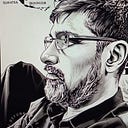Notes From Work: Productivity and Work-Life Balance
At my workplace, there was a recent discussion about work-life balance and productivity.
Let’s start by defining productivity. Productivity is the effectiveness of a unit that produces output compared to the input. It is always a relative ratio that takes into account a person’s skills and abilities to achieve their role objectives. However, human productivity is difficult to measure quantitatively because it is influenced by various factors like attitude, ability to work in a team, report and collaborate with peers, juniors, and seniors, and contribute to a larger goal. If a person is leading a team, their productivity is also dependent on their leadership skills and the outcome expected from the team.
Let’s explore work-life balance now. Work-life balance has grown as a subject driven by information technology jobs. As technology has evolved, work has proliferated into our lives; the Internet makes us ubiquitous, and devices make us accessible. This results in a 24*7 work situation, and that affects the balance in the other aspects of lives — family, personal time, hobbies among others.
“It couldn’t last. Everyone was just killing time. But if all they did was kill time, time would end up killing them.”
― Michael Grant, Gone
I have always believed that, after close to three decades of contributing to and managing teams, productivity and work-life balance are two sides of the same coin. If you are productive at work, then you can achieve a work-life balance.
Work that spills out of office hours is normally the result of ineffective work style, procrastination, non-communication, and bad attitude. The fact that the role in question demanded a clear time-bound action and effective question, the work that spilled over were mostly follow-ups and need for inputs that affected my work. The need for work-life balance brings the productivity question to the fore. If we are absent from work, then work will follow us home.
Factory environments are perfect examples of how work was left at the workplace and the non-work hours were about rest. But factories were about physical labor; today’s office environment is about mental exercise, and therefore the work-life balance must take a primary spot in the employees’ lives. But to achieve that, there has to be a clear structure of work and effective agreement to communicate well.
The leader who is responsible for getting the job done should not create time-bound work timings but should enable a flexible working environment with time-bound outcomes. This might require upgrading the employee’s skillset and clear distribution of work with a big-picture context communicated clearly. The team must reach out to its leader, and if needed reach one level above, to get the clarification sought. Communication gaps arise through hierarchies and micro-managerial work styles.
If the work timings are say 9 to 5 pm, there should be a huddle at the start of the day and then a short and clear communication while signing off. This might help the other stakeholders to calibrate and adjust their timelines as they might depend on the team’s output that might be needed elsewhere. This is where the big-picture setting helps.
I also realized the need to bifurcate official and personal communication. We moved into Google Workspace, where we could create workgroups, rather than use WhatsApp. Most of us use WhatsApp for both personal and official interactions. Tools like Google Workspace, Microsoft Teams, and Slack enable instantaneous, traceable communication through collaboration and productivity features, thereby enabling the separation of work and non-work communication, and improving work outcomes.
Lastly, no tool is better than the human mind. The human mind is a great gift, and a positive environment must bring out the best of our minds through effective work styles at the office and separation of work and non-work communication.
Work-life balance is not done by blocking work, but instead by planning and delivering at work effectively. Work is part of life and the balance is lost once the work outputs become ineffective. There are no shortcuts, it is about planning, collaborating, and achieving stuff at work so that the work stays at the workplace.
Sometimes, a hard reset is needed with clear expectation setting and allowing a path for clear and open-minded communication. Then, work becomes effective, and work-life balance automatically happens.
